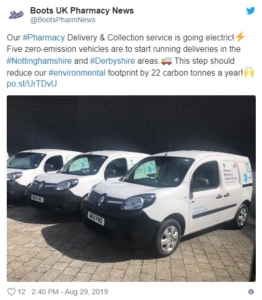How Many Viable EV Public Chargers Do We Actually Have?
The latest news from Zap-Map suggests that there are over 28,000 public EV charge points in the UK.
While the maths is right, only a small minority of these charge-points are actually viable. This means that the charging estate that we are relying on to support a huge change in transport is far smaller than 28,000 recorded – as if that were enough chargers in the first place.
Take my recent trip with my son to Newcastle as an example. For a bit of background, Newcastle is 236 miles from where I live and I’m lucky enough to have a Tesla X, capable of both long-distance travel and Supercharger use.
The trip up was easy and demonstrates how good a modern EV is. We whizzed up in near silence and then 2 hours later had a break just North of Sheffield for 25 mins. In that time we fitted in a loo-break, a pie and enough Supercharge to get us to Newcastle with 50 miles to spare. Range anxiety – I don’t think so.
Then we got to Newcastle and the experience of non-Tesla owners really started to bite…
Of the 26 chargers recorded on Zap-Map, 8 (31%) were recorded as broken.
Of the remainder, we picked two on the street next to the hotel. Both were blocked by diesel SUVs and not ticketed by the parking attendants. It was late, so we gave up and parked under the hotel.
The next day we moved the car to another carpark that claimed to have 17 chargers. They were un-signposted, so we hunted around until we found them. It then got worse. After 4 attempts we got the machines to work but it would be worth it with 4 hours of “fast” charging ahead.
The disappointment first set in when I found the charger had only added 20 miles. This disappointment grew when the Charger-your-Car charger refused to release the cable – clearly, a common problem as this is the first option on the support number. A number that they hadn’t answered after 25 minutes before my son lost patience and performed a modified Heimlich on the machine. Cable-free!
Now low on charge we travelled to Blaydon and tried the impressive GeniePoint machine at a supermarket. Impressive in size if not performance. The record below shows me paying them £10 at 1:30 pm and still fighting the machine 15 mins later as it repeatedly refused to charge my car. I gave up. But not after the charger had taken £1 off me for the pleasure.
Finally, we reluctantly left the wonderful Newcastle and relied again on Tesla and the fundamentally different experience that Tesla offers its customers.
The car’s Sat Nav told me where the nearest charger was, how many slots where there and checked for availability. When we arrived, the charger recognised the car and seamlessly connected. What makes the experience truly different is that the Sat Nav worked out the whole journey for me, told me where to top-up and how long it takes. You really just don’t have to try, it is so easy.
So, there are supposed to be more than 28,000 charging points in the UK. Given my experience in Newcastle, which is very similar to what I experience across the UK, the actual number of chargers that are in a viable location, charge at a usable speed and actually work is a far smaller number. But we desperately need to understand this number, which my guess is less than 50% of the 28,000 otherwise we will be pushing for a transformation based on the foundations of sand.
It’s also clear that we know how to deliver the right experience – it is the Tesla experience. Until the OEMs and charge providers wake up and catch up then we will need to brace ourselves for an onslaught of complaints when the mainstream moves to EVs.
Article originally posted by Ben Allan on 22/11/2019 via LinkedIn.



